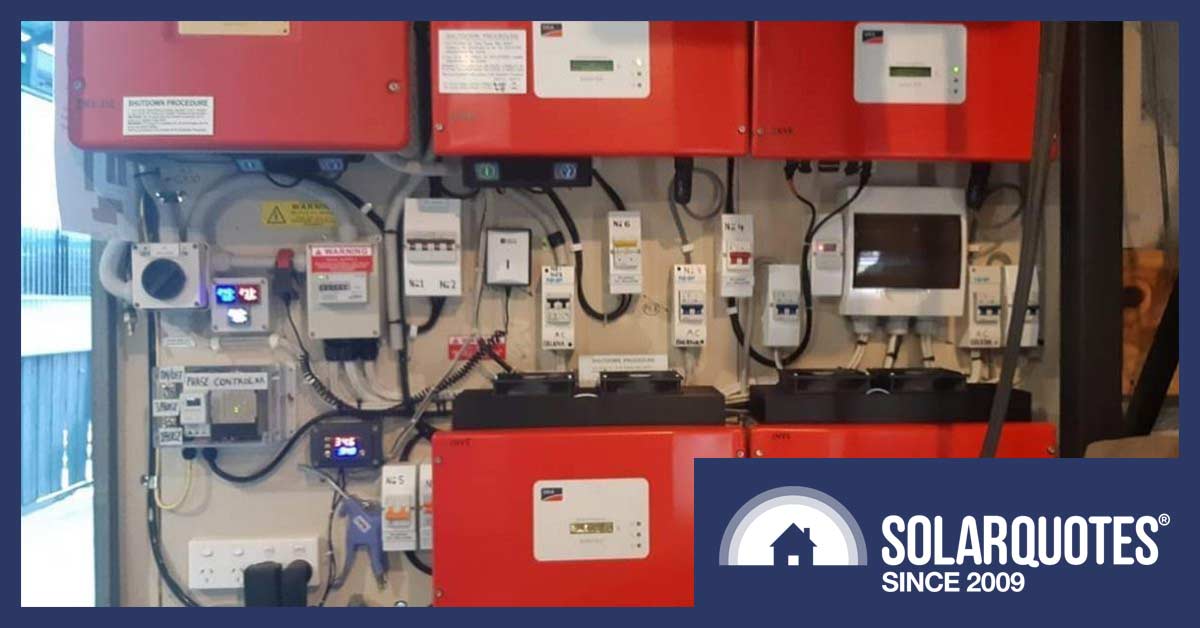
If you are reading this because you have a failed ‘vintage’ inverter, you probably bought your solar power system ten or more years ago. In which case…
Congratulations!
As an early adopter, you spent ten times more money than solar systems cost today, and now the little red inverter light is lit, you’ve unlocked the next level in the solar energy adventure game:
The Failed Solar Inverter
There are pitfalls at every turn in this choose-your-own-adventure, but remember the saving grace is you (still?) have the premium feed-in tariff that paid off the system and continues to make an outsized impact on your electricity bills.
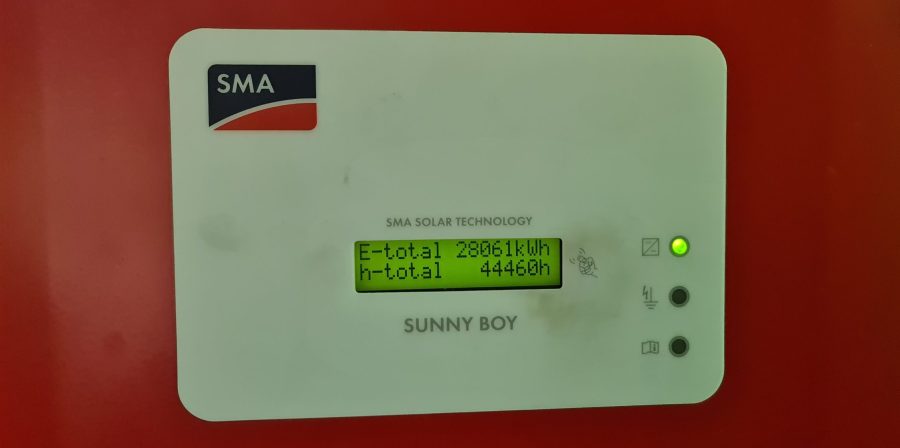
28061kWh, had they all been exported at 50cents, there’s a little over 14 grand before it gave up.
This post is mainly aimed at those who have a transformer-based inverter. They’re usually quite heavy, bolt honest, and from an electrical point of view, fundamentally safe devices that were common 10+ years ago.
There’s no dead giveaway as to what your inverter has inside, so referring to the manual or searching online will usually find its specification. If, like me, you bought a Latronics inverter and the fan is whirring away with resplendent four LED “display”, then it might be worth getting serviced before Latronics winds down in 2025 because the solar panel array will be wired to suit nothing else.
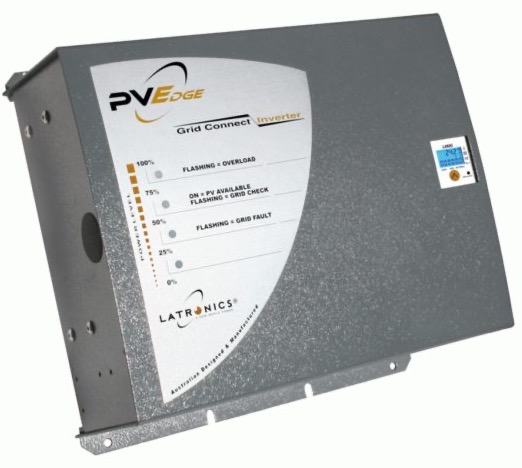
Latronics PVE. The old grey mare isn’t spectacular to look at, but it’s Australian-made and still supported if you freight it back to Queensland.
Other common transformer machines sold in Australia include the old SMA Sunny Boys, the Fronius IG series, Xantrex, Aerosharp, and the Sharp jh1600. There are a few mentioned in this handy reference.
Sadly these solar inverters are almost unobtainable now, so there are two options with some variations.
Option #1: Repair The Inverter
I’m all for repairs – it saves on invested energy and e-waste. With no Distributed Network Service Provider (DNSP) approval or feed-in tariff complications, it’s simply plug-and-play. The challenge is finding someone willing1 to look under the bonnet and fix it, and what warranty they might offer on the repair. Or you can have look on Gumtree to find a like-for-like replacement, which I know some service-orientated electricians have done; preemptively buying a cheap spare unit when they’re trawling the demolition adverts.
It’s not unusual for a cheap and cheerful new solar inverter plus associated wiring to cost $1500-$2000 or even more. However, I’ve seen old units repaired for around $300; in this instance retaining the great quality SMA machine without having to disturb asbestos eaves and Super 6 roofing.
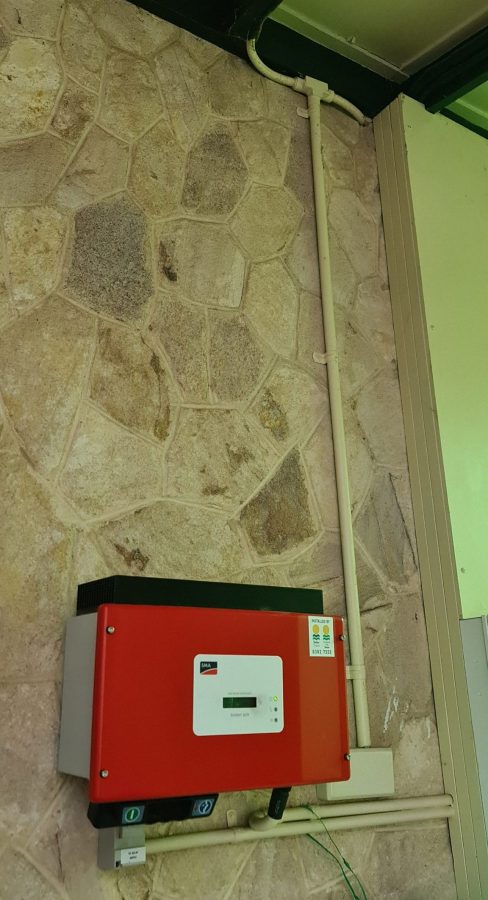
With cables all very neatly stitched into the service riser when the house was rewired, this unit would be hard to replace neatly. image credit Solar Depot
Option #2: Replace The Inverter
Replacement can become a can of worms because what was legal 10 years ago remains legal, until you change something.
As solar has progressed, inverter topology has moved to faster, lighter and more responsive transformerless designs. These shiny new machines brought on the need for new standards and an additional layer of wiring to make safe the somewhat leaky nature of power-handling electronics.
There’s nothing quite as constant as change, and changing the solar inverter means changing the wiring it’s connected to, which is almost certainly non-compliant now – not least because old systems didn’t have earth wires.
Earthing
The green and yellow wire forms an equipotential bond, meaning any metal part of the electrical system in your house is grounded. If you have a vintage transformer-based inverter, you don’t need to earth the solar array on the roof, whereas modern transformerless models do need an extra wire, run from the array to your switchboard.
Fun fact: when the industry seagulls were squabbling over the sadly defunct SolarShop, the eventual winner ended up using the customer database to send letters to customers with existing systems. They were trying to scare people, implying a change of standard meant old wiring had to be updated to the latest rules… for a fee of course.
To put it simply, modern solar inverters “leak” electricity2. In operation, as much as 120 volts can be present on the module frames. Think of it like static or an electric fence. While it’s not enough energy for a dangerous electric shock, it will be very uncomfortable.
What does earthing achieve? It bleeds off the available current bringing the frame to zero volts, and that prevents falls. No, really. Imagine you’re cleaning gutters and you get a zap from the roof. The electric shock won’t kill you, but hitting the ground after you recoil might.
The other electrical safety function of array earthing is to make it safe under fault conditions. Solid state devices can fail in a couple of ways. When they blow open circuit like a fuse, there is no internal connection; so that’s considered safe.
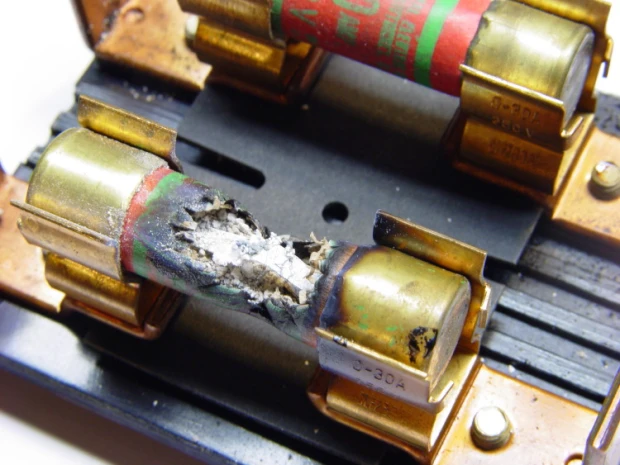
HRC fuses might not look outwardly burnt like this, but inverter components can burn open or weld closed.
The more dangerous failure is a short circuit.
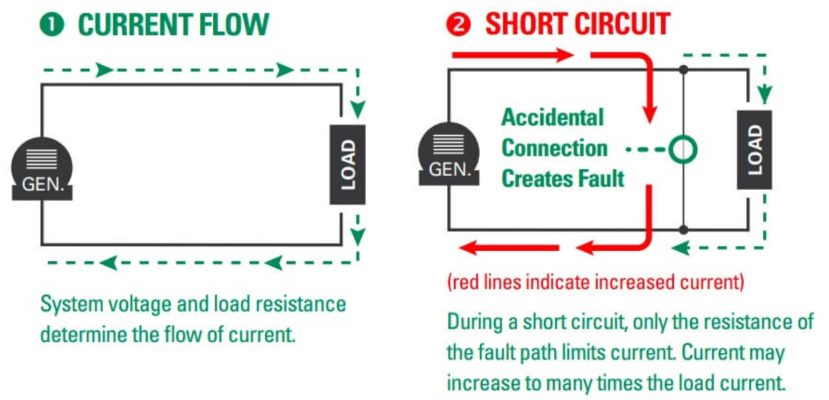
Accidentally connecting the mains AC supply to the DC wiring from your solar system is a terrible idea. By installing an earth you have a low resistance path for the fault to follow, which in turn causes the circuit breaker in the switchboard to trip before anyone gets electrocuted.
Other Traps
I have been involved in moving secondhand solar modules from one roof to another. Be warned, it can put you and your electrical contractor on a hiding to nowhere. Panels that appear fine from the front can have burns on the back. Despite working as an assembly, they can show faults when the electrical insulation is tested or the plugs are disturbed.
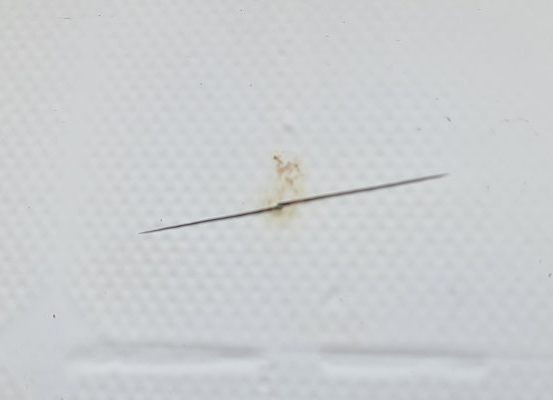
Cracks in the backing sheet like this may not show an electrical fault; yet.
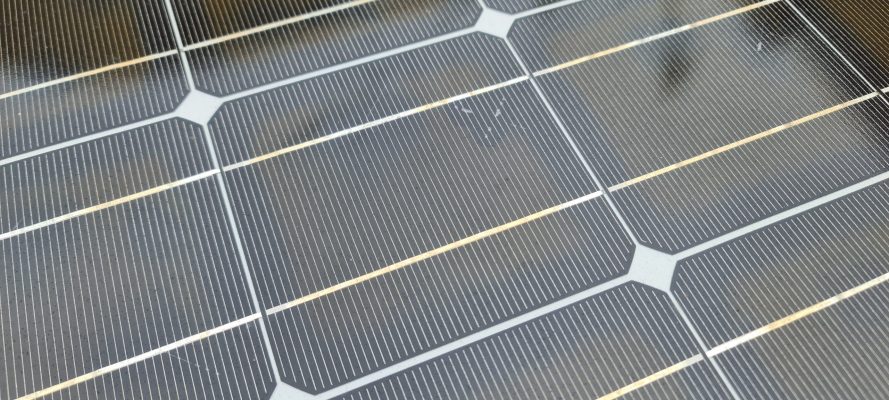
This solar panel is showing its age with the browning of the cells, but the crack in the back sheet isn’t apparent from the front.
If you replace the inverter and the DC wiring then discover a damaged panel, find insulation that tests poorly or seized hardware on the framing, it’s a slippery slope leading straight to a complete replacement system with all new equipment and the comforting reassurance of a new warranty. However, that might cost you the prized feed-in-tariff, so it’s snakes and ladders.
DNSP Requirements
Your local poles and wires organisation may have differing rules, but some are very specific. And because nobody offers a new 4.6kW solar inverter, I believe there are some Queenslanders who struggled to find solutions until Fronius found a way, albeit with a transformerless unit.
In South Australia, SAPN have a more pragmatic approach at least. If you’re within 500 watts of your original approved inverter capacity, you can install a new solar inverter or panels and keep the 44 cent feed-in-tariff
SAPN new energy services :
“All customers are able to replace an existing inverter and/or panels without a change to the Feed-in Tariff (FiT) as long as the following is adhered to:
· Approval for the replacement is obtained prior to installation
· There is no increase to the generating capacity i.e. no extra panels or an energy storage device are installed
· The inverter meets all current technical requirements, ie AS4777 and the technical standards outlined in Technical Standard TS129, and is a like for like replacement
· A previous approval was issued for the SEG(s) installed
An example of a like for like inverter replacement means a previously approved 2kVA inverter would be replaced with a 2kVA inverter. If a 3kVA inverter was to be installed this would be classified as an upgrade as 2kVA inverters that meet current standards are available. We do recognise that some inverter capacities are no longer available, to accommodate this our application form has been built with a 0.5kVA tolerance. So for example if the previously approved inverter was 1.7kVA and it is to be replaced with a 2kVA inverter, this would still be considered a like for like replacement.
Where existing panels require replacing and panels of a greater wattage are to be used then, for example, if 18 x 250 watt panels are replaced by 20 x 300 watt panels, this would be an increase in generation capacity and, in accordance with the FiT legislation, the FiT would be removed. If eligibility for the FiT is to be retained 15 x 300 watt panels will need to be installed.
Any replacement or upgrade application should be for the equipment that will remain on site once the replacement installation has occurred.”
So my South Australian friend Marc3 could possibly blow up his 2.5kW Sunny Boy again, and replace it with a new 3kW inverter. While his 16 x 185 W solar panel array (2.96 kWp) can be replaced with 8 x 370w, it can’t be expanded.
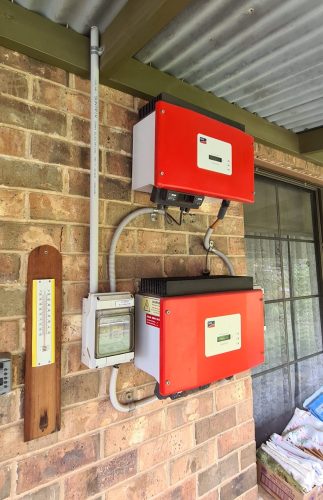
Two SMA SunnyBoy 1700s are still humming away in 2022.
Speaking Of DNSP Rules
New systems must, of course, comply with current rules regarding connection to the grid, including AS4777.2.2020. New inverters should also be internet connected as required to protect the broader grid.
New solar inverters replacing old ones may be treated differently in your area, so if you can wrangle it, Fronius offers a great solution for small systems that don’t have earth wiring.
The Fronius Galvo is a transformer-based 3kW model that is no longer manufactured, but it’s analogous to the current Primo inverter range and is still offered directly from Fronius as a new inverter with warranty and monitoring solutions available. It’s not compliant with the latest AS4777, but it’s a great solar inverter if your DNSP will allow it.
Fronius deserves an honourable mention here because not only do they offer great service, they’re proactive in reaching out to make sure this article is correct4.
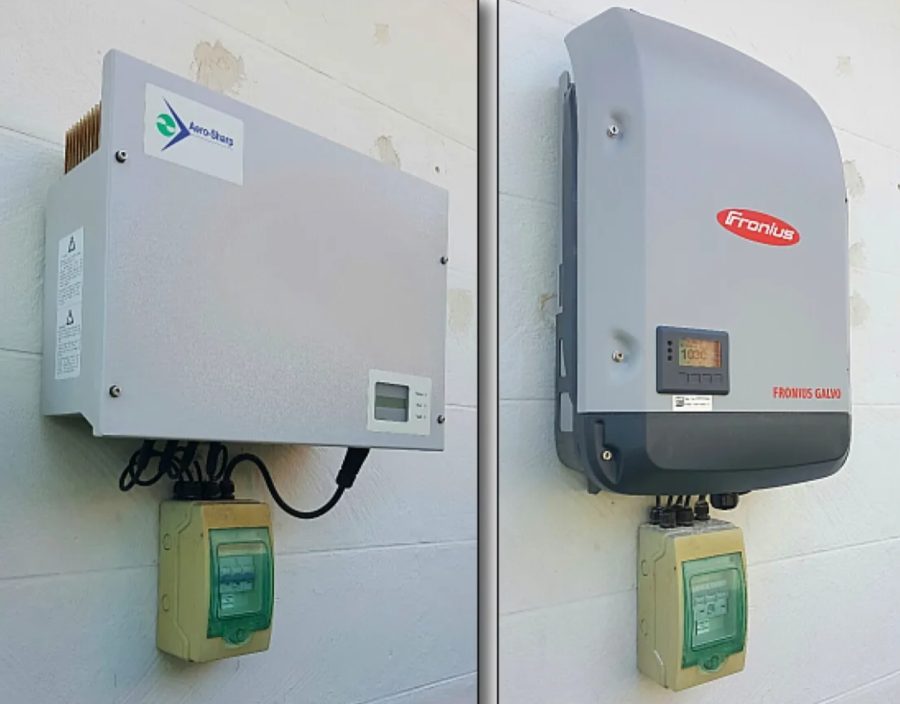
If you have an Aerosharp, there’s a very good chance it just needs a fuse replaced inside, but a Fronius is four times the inverter for half the weight. Image credit: Inverter Repairs Adelaide.
Just Bite The Bullet
As mentioned, some early adopters are on Gumtree asking $375 for the 1.1kWp Sunny Boy system that years ago cost $12,000 because they want to make a real dent in their expanding consumption. For the same spend, you can get ten times the system now, and feed-in tariffs become irrelevant when you just add a zero to the system capacity.
For those worried about the embodied energy in solar panels that might be going to landfill, you can rest a little easier knowing there are now around five recycling plants in Australia. And better still, many panels are being bought secondhand and shipped to developing countries for reuse. Even “faulty” panels that won’t pass insulation testing for 500-volt strings are perfectly good for less ambitious battery charging or running solar pumps.
So, Where Should You Spend Your Money?
First, you probably shouldn’t ask me because I’m great at spending other people’s money.
I’m willing to bet some local electricians will check your solar system out, change an inverter, add an earth wire, charge modestly and move on without batting a regulatory or compliance eyelid. Competent electrical workers doing that with small systems don’t pose much risk to you or the network, but the network should still be notified, and the inverter is internet-connected where required.
If your solar inverter is showing a fault light, you might follow the instructions on the shutdown procedure sticker yourself, turn off the isolators, disengage the plugs, and lift the machine off the wall and into your car to be diagnosed and repaired. However, even if you are confident, I would still recommend getting a qualified and experienced solar electrician to have a look. It’s something you promised the DNSP you would do every five years anyway.
It can’t hurt to run and get a quote for a big, new solar system in any case. If you look at the totals on your retail meter (and it hasn’t been swapped since the system was installed), you may be pleasantly surprised at how much you’ve already saved.
Footnotes
- In Adelaide, try Chris Murphy, inverter repairs at Morphett Vale ↩
- He gets offended if you pronounce Mark with a K. ↩
- The Galvo is still available in small quantities directly from Fronius and is only sold for their “Repowering Program”. This is done via the Fronius Technical Support hotline. Basically, your electrician can register a case, and Fronius technical support will then organize the rest. Please note though, the Galvo is no longer on the CEC approved inverter list and is not certified to the 2020 version of AS/NZS 4777.2. Some states allow these to still be used for replacement, but some may not. ↩

 RSS - Posts
RSS - Posts



I am dreading the day my 14 year old Fronius IG30 pops its clogs. Our asbestos roof means upgrading our arrays is out of the question
I will be trying my hardest to get a repair should that day arrive before 2028
In the meantime I will continue to screw down consumption and increase exports. I wonder how many other premium FiT receivers have done the same thing. Costing the scheme more in the long run. Just pay me out.
I’m interested to find out if old systems that may not have had the collected leaf matter removed properly from behind the panels has caused corrosion of metal roofing. Rotted leaves etc produces an acid that will corrode steel just like the old style bonnet protectors on cars. Some roofs are so steep and high that cleaning is a very expensive project due to access and safety requirements.
Hi Richard-you may well have explained my problem. Some years after my 15 year old system was installed the roof under the panels began to leak during heavy rain. I have many eucalypts around my home that deposits leaves under my panels. I have come up with two possibilities. The first is as you say, possible corrosion around the screw mounting holes. The second a build up of leaves forming a dam which allows water to build up and thus flow over the top of the corrugations and down through an ill sealed mounting hole. Periodically these leaves are washed away collapsing under their own weight and the dam is temporarily destroyed, thus avoiding leaks for a time until the next build up. The bottom line here is that installers MUST make damn sure that the mounting holes are well sealed.
Interesting post, thanks.
My system is 12.5 years old, and counting. However I’m on my THIRD inverter after two Xantrex 5kW units failed – not impressed!
However the cheap replacement is six years old and still going strong…. Touch wood.
The panels? Not so much, lots of micro cracks and well down on output.
Sooner or later I will have to bite the bullet- am not looking forward to that.
It’s also been suggested by one installer that my current 6.5kW of panels will need to be 5kW or possibly risk my 44c FIT, which is also a concern.
I feel like you should be shouting much louder that YOUR PV PANEL FRAMES/RAILS ON THE ROOF ARE LIKELY ENERGISED AND CAN SHOCK rather than burying it in an article of little interest direct interest to many of the non-curious. I had no idea, while blithely doing things on the roof around the panels like cleaning leaves. My system happens to be micro-inverter based so if there’s any voltage it’s likely too low to worry about, but still.
Apropos transformer inverters, Selectronic reckon the chunky transformer in their battery inverters makes them better for starting induction motors. A 2 kW compressor, briefly needing 8 kW – 10 kW peak would be up there as a challenge on an off-grid site. Is there any information on how well transformerless inverters handle that? (Would hate to find out after a suboptimal install.)
I figure that an AC coupled solar inverter is less critical if the battery inverter can do the heavy lifting. (Better than the other way round if a cloud is going over.)
Hi Anthony,
Thanks for the interesting article.
I have a 3kW Latronics inverter just like in your photo. I am an early adopter and the system has paid for itself many times over (QLD ,44c bonus until 2028?). When I purchased the system I got only 1.5kW panels (lack of money and difficulty in fitting panels on small N part of roof) intending to put more panels when finances permitted but found electricians were not interested.
I understand the inverter is the registered part so I could put 4(?)kW of panels on a 3 kW inverter and still continue the excellent FIT.
The inverter is going strong (touch wood) but I would need a new inverter with more than one string so I could also use the large W side of the roof.
Basically a new 4 kW system. I’ll have to do the maths to see if it is worthwhile. Do you think I would be able to get the government rebate available on a new system?
Cheers Bob
With the legacy FIT (which I also have), you can install more panels but not “overclock”.
ie: if you have always had a 3kW approved inverter, you can increase solar up to 3kW …. but not more.
I have checked this with Energex and that was the reply.
You have to be very careful with the FIT scheme Bob. Though I don’t know how they police it, the Queenslanders say they’ll bump you off your tariff even if you have a second separate system generating on the premises during the day.
https://www.qld.gov.au/housing/buying-owning-home/energy-water-home/solar/feed-in-tariffs/solar-bonus-scheme-44c
Re; the statement about reading the smart meter total to determine the long term collective output. On the 04/11/2022, My supplier (soon to be sold off to Brookfield O/S) reset my meters to ZERO. When first questioned, the denials were vehement but with continued technical pressure Origin admitted the meters were reset without me being advised. Origin then advised me to contact the “poles & wires” company, which I did with the result they were mightily pissed off that Origin were lying & advised me to contact the Origin contracted meter supplier/reading company which and despite their initial denials, after substantial technical pressure they admitted that they had “done an upgrade” to my two meters. Finally was accepted by them that they had the ability to “interfere” with my meters with the potential to alter actuals with estimates, all without my knowledge.
When Origin is (cunningly) offloaded offshore I will be shifting to an other Australian owned retailer.
That’s really disgusting.
I can only HIGHLY recommend Energy Locals- locally owned and fabulous customer service.
They don’t always have the very best rates, but usually close and so painless. We’ve been with them for years and couldn’t be happier.